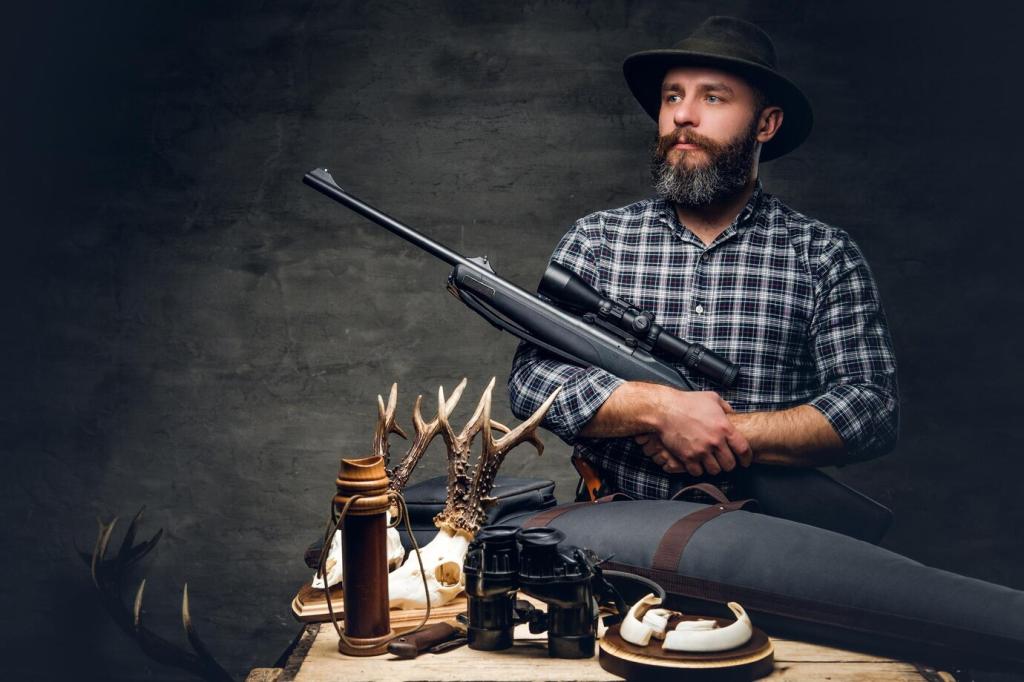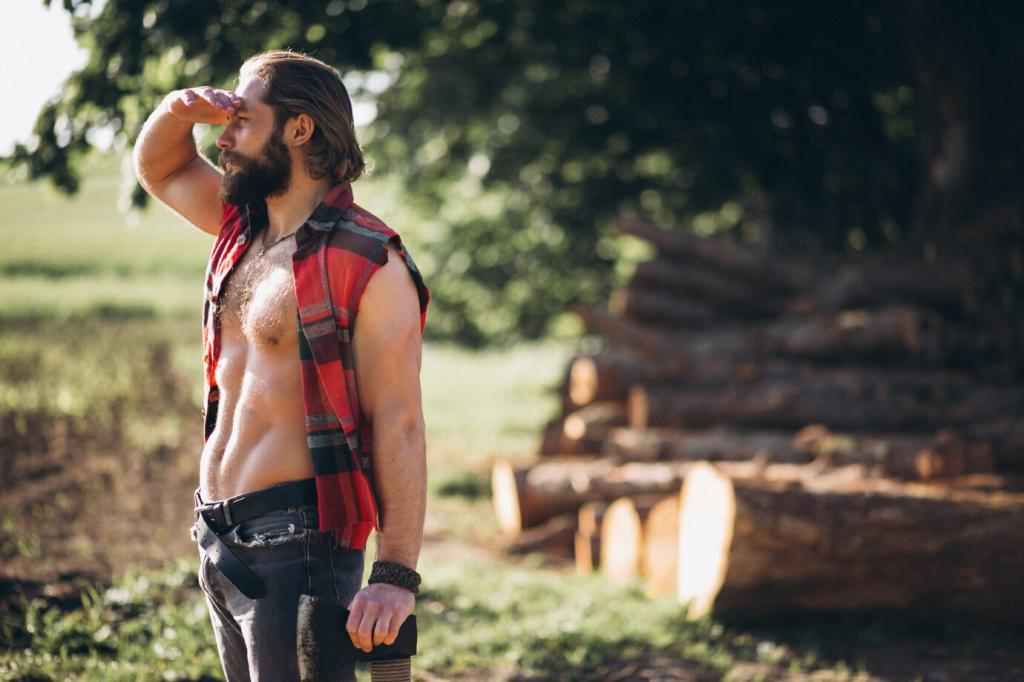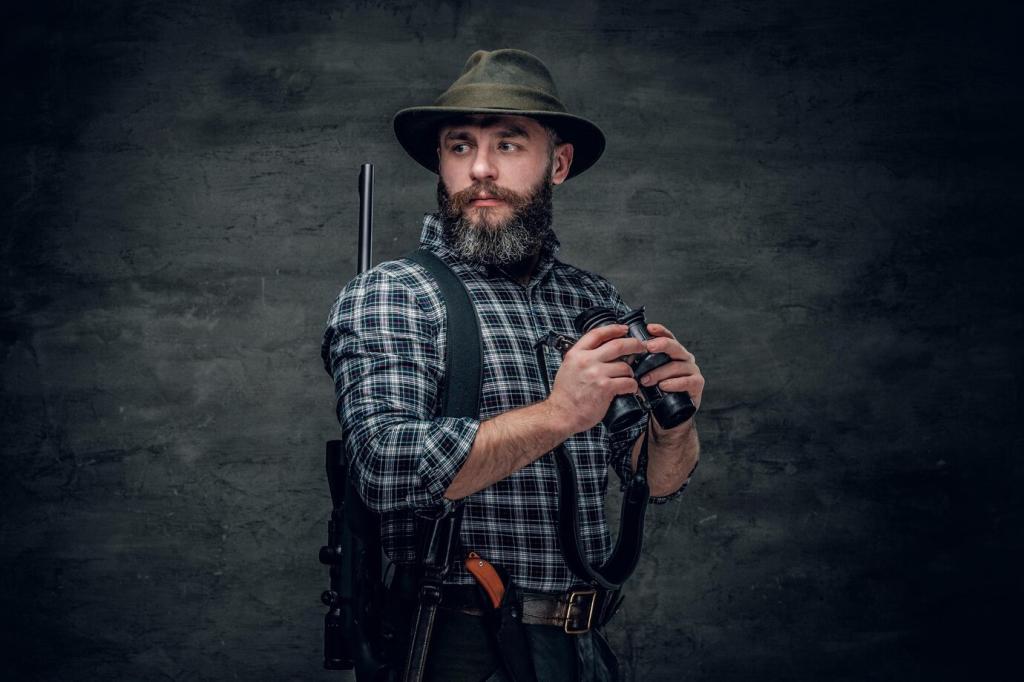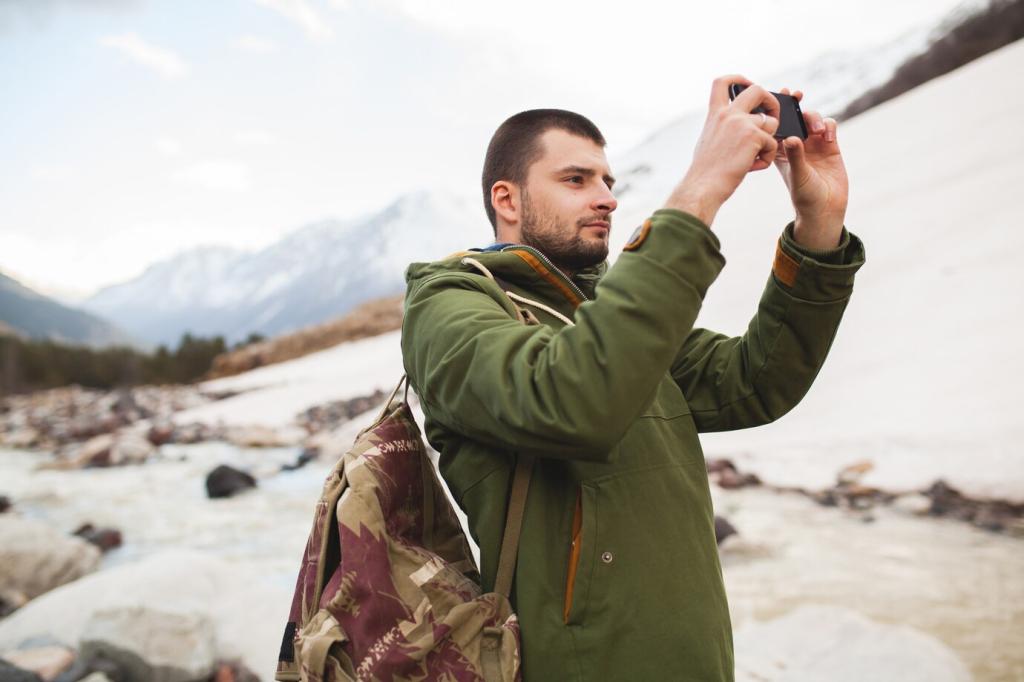
Chosen Theme: Weather-Adaptive Hunting Accessories
From sudden squalls to scorching midday sun, Weather-Adaptive Hunting Accessories keep you comfortable, ethical, and effective. Explore gear that responds to changing skies, and share your experiences or subscribe for future field-tested insights tailored to unpredictable conditions.
Merino manages moisture and odor when you hike hard, while synthetics dry fast during quick weather swings. Blends deliver durability and softness, keeping a steady feel against skin as temperatures bounce. What base fabric rescued your longest, wettest sit? Share your go-to in the comments.
Layering That Thinks Like the Weather

From 200g to 1200g, insulation ratings are more than labels—they’re survival for toes over frozen ground. Removable liners dry faster by the fire, while supportive footbeds conserve energy on steep climbs. What’s your insulation sweet spot for late-season wind chills? Drop your regional advice below.

Rubber boots excel in muck; leather with membranes breathes on long hikes. Reproof the leather and watch seams, where leaks begin. Pair with knee-high gaiters to stop snow and grit. Aggressive lugs that shed mud restore traction between steps. Share your favorite reproofing routine.

Clip-on microspikes or screw-in studs transform boots for icy sidehills. Carry a lightweight traction kit and a tiny wrench for quick swaps. On wet rock, softer rubber compounds often grip better. Always test on safe ground first, and tell us which traction setup saved your hunt.
Keeping Hands and Head Ready
Glove Systems That Shift Modes
Run liner gloves for dexterity, then add a waterproof-breathable shell or flip mitt when glassing in wind. Fold-back fingers help manage triggers and touchscreens. Choose quiet fabrics that won’t betray you in drizzle. What glove combo kept you nimble in freezing rain? We’re gathering reader favorites.
Heat on Demand Without Bulk
Chemical hand warmers and rechargeable heated liners extend hunts when fronts crash in. Store batteries close to your core in cold weather for better performance. Rotate warmers between pockets and mitts to balance heat. Subscribe for deeper battery tests across subzero mornings and slushy afternoons.
Headwear for Sun, Rain, and Snow
A merino beanie packs tiny yet traps heat when temperatures slide. Brimmed, DWR-treated caps shed drizzle without blinding you, while UPF neck gaiters shield against high-altitude sun. Ear flaps and windproof headbands cut biting gusts. What’s your all-conditions headwear stack? Join the discussion below.
Optics and Electronics That Beat the Weather
Anti-Fog and Rain-Shedding Tricks
Hydrophobic lens coatings, rainguard solutions, and disciplined lens-cap use stop droplets from ruining a shot window. Carry a dedicated microfiber and a small blower to clear grit gently. Know your dew point—preventing fog starts with storage. Comment with your fastest method for reclaiming a fogged view.

Packs Built for Storms and Steam
Pair a roll-top dry bag liner with taped seams and a fitted rain cover. Quick-drain pockets purge water after creek crossings. A suspended back panel improves airflow during warm climbs. Quiet, brushed fabrics dampen noise in drizzle. Subscribe for a full breakdown of wet-weather pack anatomy.
Weapon Slings and Bow Care in the Wet
Non-slip, silicone-threaded slings stay put on soaked jackets. Quick-adjust tabs tighten before steep descents. Bow limb sleeves and simple string covers reduce water beading. Reapply string wax after storms to protect fibers. What wet-weather maintenance steps do you never skip? Leave your checklist below.
Organization That Adapts Instantly
Color-coded, waterproof pouches keep gloves, batteries, and first aid separate and dry. A purge-valve dry sack compresses bulky layers without trapping moisture. Stage critical items in large-pull pockets for gloved hands. Tell us your smartest pocket map for foul-weather efficiency.
Scent, Visibility, and Safety Across Seasons

Scent Management in Humidity and Heat
Activated-carbon storage bags, merino baselayers, and quick-dry outerwear help manage odor when humidity spikes. Rotate socks and liners midday to reset. Keep a spare wicking shirt in a dry bag. Which simple habit most improved your scent control during sticky, still mornings? Share your routine.

Camouflage That Matches the Day
Reversible covers shift from early-season greens to snowy whites. On overcast days, muted patterns blend better than high-contrast shadows. Carry blaze-orange rain shells to satisfy safety requirements without losing stealth. What colorway fooled wary eyes in shifting light? We’d love to hear your observations.

Insect and Sun Protection You’ll Actually Wear
Permethrin-treated gaiters and shirts block ticks and mosquitos, while UPF neck gaiters shield against harsh midday rays. A lightweight bug net in the lid pocket makes swamp sits bearable. Comfort encourages stillness, which keeps you hidden. Subscribe for a field guide to summer accessory systems.


Field Repairs and Emergency Weather Plans
Low-temperature lubricants keep actions cycling when oils thicken in frost. Corrosion wipes fight post-storm rust on steel and screws. A compact bore snake clears moisture before storage. What maintenance accessories ride in your lid pocket every wet hunt? Add your must-haves to our growing checklist.
Field Repairs and Emergency Weather Plans
An ultralight tarp, emergency bivy, and solid fire starters build margin during surprise squalls. A microfiber towel, spare socks, and cordage transform a cold, damp break into a warm reset. Share your lightweight shelter setup that actually gets used, not just carried.
Lessons From the Storm: Stories and Takeaways
01
The Day the Front Arrived Early
A friend swapped thin liners for flip mitts and snapped his shell vents closed as sleet began. He stayed glassing while others hiked out soaked. That quiet glove change kept him in the pocket for a clean, ethical shot. What fast adjustments anchor your foul-weather plan?
02
Fogged Glass to Clear View in Seconds
Rain pelted the ridge. A hydrophobic wipe, disciplined cap management, and a neoprene bino cover kept lenses clean enough to track a quick opening. The routine took seconds but saved an opportunity. Drop your favorite glass-saving ritual so more hunts end with clear optics, not frustration.
03
A Heat Wave Elk Hunt
A late-season heat spike forced changes: UPF sun sleeves, insulated bladder sleeve, and a long midday siesta under a tarp. Evening thermals flipped, and the pack’s ventilated back panel made miles bearable. Which hot-weather accessory surprised you most? Subscribe and share your lessons learned.
